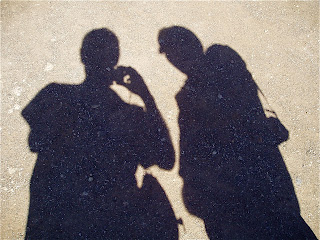the spirit of the broken bowl, restored into a new life
A
challenging art project
At the start of this project, I am guided by Ann Michaels, who wrote in
her book 'fugitive pieces': "Important lessons. Look carefully. Record
what you see. Find a way to make beauty necessary; find a way to make necessity
beautiful."
Being an artist, my life ticks along in a wonderful
way from one creative project to another, be it a commission, an exhibition or
a piece of writing. Each project presents a challenge to make it worthwhile,
because without a challenge it would not provide any learning.
None of my projects have been as challenging, however,
as my most recent one. This project announced itself, to my surprise, with the
diagnosis of Parkinson’s disease eight years ago. I knew
instinctively that I was up for the major challenge of my life. Medication has kept the disease at bay for much of
those years but more recently that has changed.
After some time of contemplation, to come to grips
with this news, I decided to treat this as just another art project. Getting
involved. I also decided to change the name from Parkinson’s disease to Parkinson’s
gift, which has already changed my attitude in a more positive direction. Up
till now I have kept my Parkinson’s quiet but having become more obvious, I
have decided to make it more public.
During a recent words in winter
event I started this with the reading:
“When you are a maker,
listen to your hands”. To which we can add, ‘because the head sometimes gets in
the way’. This is a saying which has always worked for me. That is until
recently when the Parkinson’s I was diagnosed with some years ago, but which
was kept under control by medication, is now snapping at my heels. This means
that my head and hands go into different directions and have a totally
different relationship than I am used to.
“When you are given lined
paper, write the other way”, has been creative
advice I have always followed, but now this is getting too real, my
hands are writing every which way, none of which I want them to.
My gait has changed, so if
you see me in the street and I walk a bit differently I am not under the
influence of alcohol or dope, but that of my Parkinson’s, who insists on
walking with me everywhere I go, and wherever possible trip me up.
My memory is affected to
the point where, at times, I cannot remember the names of people I have known
for years.
The worst of it is that my
ceramic making seems to be almost at an end, because the fine motor skills I
need to employ are the most affected. However such is my life and I will keep
the creative spirit going in one way or another. Because it is, and has always
been, the meaning of my life.
I am not giving in, I will
use the same approach as when I was diagnosed with cancer, the treatment of
which I aided by making it into an art project, which helped me to cope”.
Although with all my previous art projects I have
been in charge, this newest one has taken charge of me. I have very little say
in it. In fact, I know little about it and found out soon enough that this
project, of which I am the subject, is directed mostly by doctors.
In order to get some sort of handle on this new
development of my life, I decided, as part of the gift, to document the process.
And now,
looking at the diagnosis of my Parkinson’s in a different way, there waits the
possibility for these coming experiences to be interpreted through art.
The Parkinson’s diagnosis, like
any challenging art project, has knocked me out of my comfort zone, this one more
so than any.
I am like
a small boat on a rough sea. I do have a paddle and am able to give it some
direction, some meaning. I intend to employ my imagination and by turning the
event into a work of art I, at least, have that control. And since this is the
only control I have, I'll take it.
Learning
is the best healer.
petrus






